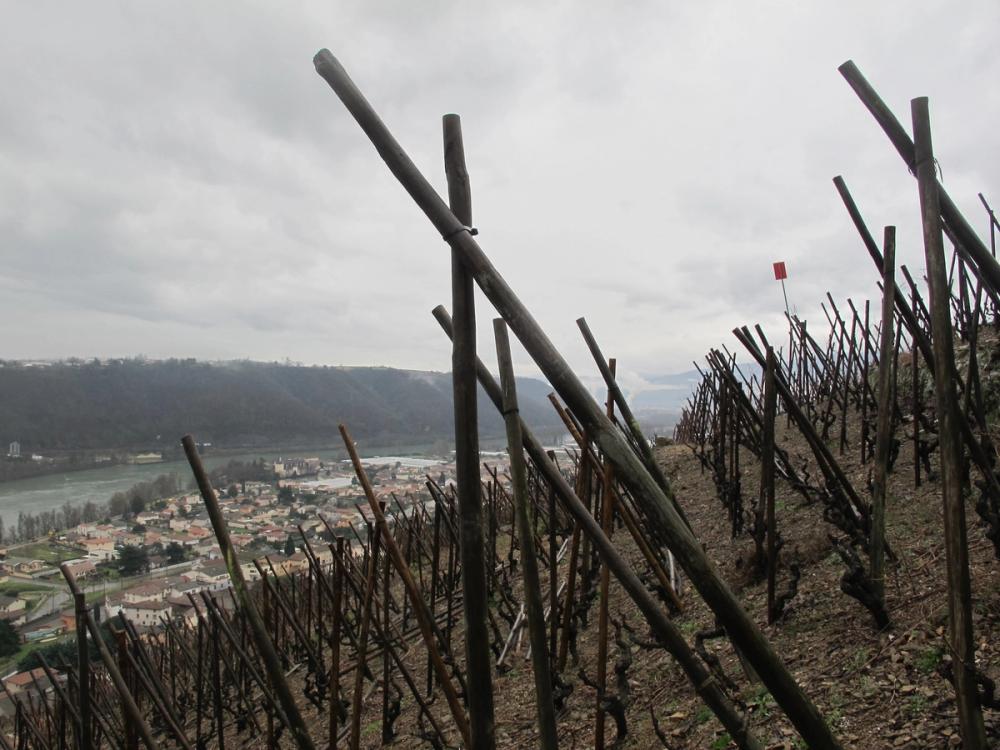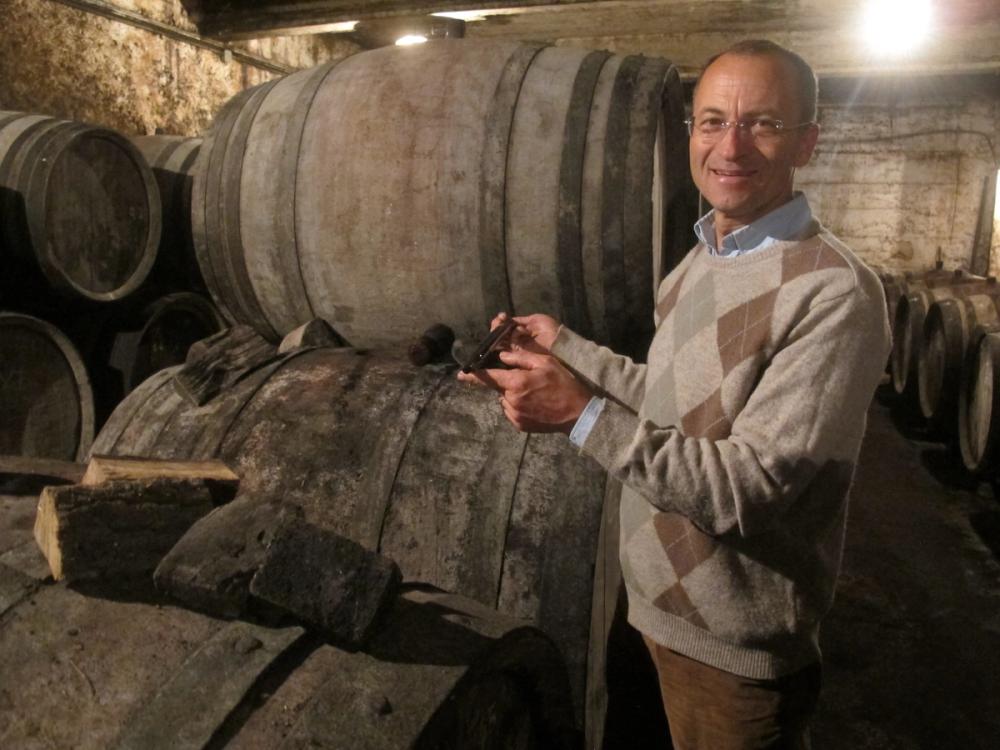As a special offer to readers of The Buyer, Matt has generously given 40% off of the cover price of Wines of the Rhône for a limited period only. See the bottom of this article for full details.

First off, congratulations – I really enjoyed reading the book. But wasn’t taking on the whole of the Rhône somewhat daunting?
Thanks – and yes, it was a rather time-consuming project! One of the great advantages of specialising in the Rhône is that I can get to grips with two very different regions, the Northern Rhône and the Southern Rhône. The drawback is that I have a lot of territory to cover; in the end I had enough material to write two different books. But in the minds of most wine lovers, the Rhône is still one entity, so I think it’s useful to have one comprehensive book that encapsulates everything.
In order to write this book, you ‘upped sticks’ and moved your family to the Rhône – how was that as an experience?
It was a formative experience to say the least. We moved from South London to the little village of Châteauneuf-de-Gadagne, 20 minutes’ drive east of Avignon, in August 2018. The original intention was to stay for 12 months, but we ended up living there for two years. We had to tackle an administrative and practical assault course to get there and set up a new life but it was entirely worth it. We enrolled the kids at the local school where they quickly picked up the language, and my wife Louisa worked from home.
To really get under the skin of a region – to get to know the culture, the people, the language – it certainly helps to live there for a period of time. And it meant I could visit every one of the 52 appellations. I left no stone unturned.

La Landonne
Tell us about your relationship with Rhône wines – was it a gradual appreciation? or did you have a ‘road to Damascus’ moment?
As a writer I think you naturally gravitate towards regions that interest you personally. And the more you write about a style of wine, the better you understand it. As a result, you get asked to write about it more frequently. So it’s a virtuous circle. Now I cover the Rhône for Decanter magazine and head up their Rhône panel at the Decanter World Wine Awards. It’s important not to lose track of the broader global wine scene though, and I still write about wines from all other parts of the world.
What is it about Rhône wines that you love so much?
It’s a combination of things. I was originally drawn to the Rhône because I loved the wines; the purity, finesse and fragrance of the Northern Rhône, and also the opulence, richness and generosity of the Southern Rhône. But there’s much more to the region that drew me in. The people for a start – so many of the estates are still family businesses, run by men and women that I can identify with. They’re not in it for the money, but because they believe in what they’re doing. It’s also a beautiful and soulful part of the world, with a great abundance of delicious produce.

La Chapelle
Which particular appellations are your favourite and why?
They all have their own quirks and merits, so this is difficult to answer concisely! In the Southern Rhône, I think that Cairanne produces a lot of really classic, balanced expressions of the Southern Rhône. The standard of quality in Gigondas is very impressive, and the best wines are phenomenal and very long lived. For value, there’s a lot to be found among overachieving Named Villages such as Côtes-du-Rhône-Villages Saint-Andéol, Séguret, Sablet, Valréas, Visan, Massif d’Uchaux… The best wines of Châteauneuf-du-Pape, however, when fully mature, are unbeatable.
In the Northern Rhône, all the eight Crus have their place, but the very best wines of Hermitage and Côte-Rôtie are transcendental. Cornas is the most improved, and on occasion can rival these two big names. For value, it has to be Saint-Joseph and Crozes-Hermitage but these appellations are vast so you have to know where to look.
Are the wines getting better do you think? If so, which styles/ appellations should we be keeping an eye on?
In general terms quality is certainly improving, but not all appellations are progressing at the same speed. The new generation of winemakers is well educated and well-travelled, which helps to support an ongoing improvement in wine quality. And trends like using less new oak, gentler extraction and controlled use of stems are all helping to produce more balanced, drinkable wines. Arguably the biggest jump in quality over the past twenty years has been among the region’s food-friendly and expressive white wines.
The eight satellite ‘Other Rhône Valley’ appellations that surround the main Southern Rhône growing area, are worth keeping an eye on. Ventoux especially, it has pockets of fantastic terroir at altitude with a fresh climate. Costières de Nîmes, Duché d’Uzès and Luberon are also worth getting to know.

Emmanuel Reynaud tasting from barrel at Château Rayas. Wines of the Rhône contains a hilarious anecdote about his grandfather Jacques Reynaud hiding from a UK importer.
Any up-and-coming winemakers that you think need to be on sommeliers’ radars?
There are so many to choose from, but you could do worse than biodynamic Domaine Gramenon, who have excellent reds and whites across the price spectrum; as does Domaine Chaume-Arnaud in Vinsobres, Domaine la Luminaille in Rasteau and Domaine la Florane in Visan.
In the Northern Rhône, the following estates in Crozes and Saint-Joseph offer finesse, value and an unmistakable sense of place: Domaine Aléofane, Domaine Laurent Habrard, Domaine Laurent Fayolle and Domaine Faury.
Natural wines lovers should take a look at the burgeoning revolution in Tavel – producers like Domaine l’Anglore, Clos des Grillons, Moulin la Viguerie, Domaine des Carabiniers. It’s famous for being a 100% rosé appellation, but many of these wines are more like pale reds and they work brilliantly with food.
To what extent are winemakers going back to the past in terms of winemaking?
This is particularly true of some estates in the Northern Rhône. After a dalliance with a more ‘modern’ style in the 1990s and 2000s – new oak barriques, destemming, selected yeasts, pushed ripeness – there is something of a swing back to a more traditional style. So less new oak, using demi-muids instead of barriques, including a proportion of stems in the ferments, natural yeasts, bypassing fining and filtration – a more ‘hands off’ approach. Largely it’s a good thing, and we’re seeing wines with more detail, freshness and a clearer expression of terroir as a result.
You write that 9% of winemaking is organic in the Rhône. Given the climate of the Southern Rhône is that a lot do you think?
It’s a start. It’s closer to 30% in Châteauneuf-du-Pape, which is much better. Organic viticulture is relatively easy here, thanks to the hot, dry climate, and especially thanks to the rampaging north wind which helps to keep diseases at bay. So there’s room for improvement, but most quality-minded estates have organic viticulture in their sights if not already practising.

The Chaillots lieu-dit in Cornas looking towards Château de Crussol in Saint-Péray.
Cooperatives – a blessing or a curse?
They were a blessing, and a vital part of the development of viticulture in the Rhône (particularly the Southern Rhône). Today I have mixed feelings about them. On occasion co-ops can be the source of very good bottlings – such as Les Vignerons d’Estézargues – and when they come up with the goods, the value for money can be unbeatable. But a significant proportion pump out very ordinary wines.
You mention that you constantly had to update the book as you were writing it. With that in mind, and given the accessibility of the internet, what advantages are there in buying a book about such a dynamic wine region?
Many topics – within and outside the world of wine – are dynamic. That’s one of the reasons they remain relevant and exciting, making us want to read about them! Not all elements of the Rhône are in flux of course; the essential terroir of each individual appellation remains fairly static (except, alarmingly, for that vital ingredient of climate). It tends to be the human element that changes – so trends in viticulture and vinification, shifts within specific domaines and the birth of new estates.
It’s true there is plenty of information available for free on the internet, but what this book offers is a steady, reliable, independent point of view across all appellations and hundreds of producers. If you want to know how the style of one producer compares to that of another, and which of their cuvées are mostly like to please and why, then I suspect you’re more likely to get a transparent answer from a book in a series like the Classic Wine Library than the internet.
Did that influence the way you approached writing about individual domaines? It must be hard for example covering Vieux Télégraphe on just one side?
Working with an allotted word count, I had a thorny decision to make when writing profiles of important domaines. Do I write at length about a small selection of estates? Or do I write shorter entries but cover a greater number? With 52 appellations to cover, even if I was just to include two from every AOC, that’s already 104 entries. In the end, I tried to capture the essence of around 220 key producers across the Rhône, and listed an additional 200+ domaines of interest under the appellation in which they excel. I hope that I struck the right balance.

Winemaker Denis Alary with a map they worked with during the promotion of the Cairanne appellation to cru
You’re a sommelier at an upmarket gastropub/ mid-market restaurant and allowed four Rhône wines on the list – what are you going to choose?
I might start with the following:
Domaine Alary Cairanne rouge L’Estevanas 2017– complex, expressive, wild.
Moulin de la Gardette Gigondas Tradition 2019– fragrant and drinkable but still unmistakably Southern Rhône.
Domaine Jamet Côtes-du-Rhône rouge 2019– grown on slopes largely bordering Jean-Paul’s Côte-Rôtie vineyards, and made by the master himself.
Domaine Laurent Fayolle Crozes-Hermitage blanc ‘Sens’ 2019– fresh and intense, great value white Northern Rhône.
Apart from Rhône what other wines might we catch you having a bottle of?
My tastes are pretty broad, and I couldn’t live on Rhône wines alone. Recently I’ve been buying wines from Jura, Alsace, Loire, Germany, lots from South Africa, Northern Spain, Northern Italy… but on publication day, it’ll be a bottle of Champagne from Emmanuel Brochet. And maybe a cheeky Côte-Rôtie…

Wines of the Rhône is available to buy now.
Readers of The Buyer can receive a 40% discount by using the following code RHONEBUYER40. For delivery within Europe please click here (http://www.infideas.com/classic-wine-library/classic-wine-library-2/), for delivery within the US, click here (https://infiniteideas.directfrompublisher.com/).
Offer is valid until 31st January.































